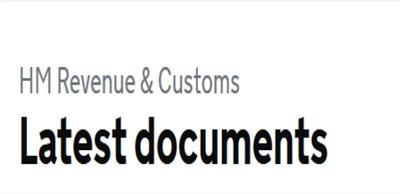Find out if you’re eligible and how much you can claim to cover wages for employees on temporary leave (‘furlough’) due to coronavirus (COVID-19).
Published 26 March 2020
Last updated 12 June 2020 — see all updates From HM Revenue & Customs
Contents
- Who can claim
- Employees you can claim for
- Agreeing to furlough employees
- When your employees are on furlough
- Before you claim
- Contacting HMRC
This guidance page was updated on 12 June to include details on how the scheme will change from 1 July.
The first time you will be able to make claims for days in July will be 1 July, you cannot claim for periods in July before this point.
31 July is the last day that you can submit claims for periods ending on or before 30 June.
If you cannot maintain your workforce because your operations have been affected by coronavirus (COVID-19), you can furlough employees and apply for a grant to cover a portion of their usual monthly wage costs where you record them as being on furlough.
From 1 July , employers can bring furloughed employees back to work for any amount of time and any work pattern, while still being able to claim the grant for the hours not worked. From this date, only employees that you have successfully claimed a previous grant for will be eligible for more grants under the scheme. This means they must have previously been furloughed for at least 3 consecutive weeks taking place any time between 1 March and 30 June 2020. For the minimum 3 consecutive week period to be completed by 30 June, the last day an employee could have started furlough for the first time was 10 June. This may differ if you have an employee returning from statutory parental leave.
From 1 August 2020, you will be asked to contribute towards the cost of your furloughed employees’ wages. Find out more information on how the Coronavirus Job Retention Scheme is changing.
If you’ve already worked out how much you can claim, you can claim for wages online through the Coronavirus Job Retention Scheme.
To use the scheme, the steps you’ll need to take are:
- Check if you can claim.
- Check which employees you can put on furlough.
- Steps to take before calculating your claim using the Coronavirus Job Retention Scheme.
- Calculate how much you should claim.
- Claim for your employees’ wages online
- Report a payment in PAYE Real Time Information.
Please use the online support and do not contact HMRC unless it is absolutely necessary – any questions should be directed at your agent, representative, or our Web chat service.
HMRC will check claims. Payments may be withheld or need to be paid back if a claim is found to be fraudulent or based on incorrect information. You can report suspected fraud in the Coronavirus Job Retention scheme.
Coronavirus Job Retention Scheme grants are not classed as state aid.
Who can claim
You can claim for any employees you have furloughed if you have:
- furloughed that employee for at least 3 consecutive weeks between 1 March and 30 June 2020
- a UK PAYE scheme started on or before 19 March 2020
- enrolled for PAYE online
- submitted a report under the Real Time Information (RTI) reporting system for that employee on or before 19 March 2020
- a UK bank account
For employees that meet the criteria above, the number of you claim for in any single claim period starting from 1 July cannot exceed the maximum number of employees you claimed for under any claim ending by 30 June.
For example, an employer had previously submitted three claims between 1 March 2020 and 30 June, in which the total number employees furloughed in each respective claim was 30, 20 and 50 employees. Then the maximum number of employees that employer could furlough in any single claim starting on or after 1 July would be 50.
There are some exceptions explained in this guidance for employees returning from parental leave where this cap may not apply.
If you receive public funding
If you have staff costs that are publicly funded (even if you’re not in the public sector), you should use that money to continue paying your staff, and not furlough your staff.
Organisations can use the scheme if they are not fully funded by public grants and they should contact their sponsor department or respective administration for further guidance.
If you’re an administrator
Where a company is being taken under the management of an administrator, the administrator can furlough and claim for employees who have been furloughed for at least 3 consecutive weeks taking place any time between 1 March 2020 and 30 June by their previous employer.
Administrators should only use the scheme if there is a reasonable likelihood of rehiring the workers. For instance, this could be as a result of an administration and pursuit of a sale of the business.
Employees you can claim for
Find out which employees you can put on furlough and claim for.
Agreeing to furlough employees
Employers should discuss with their staff and make any changes to the employment contract by agreement. When employers are making decisions in relation to the process, including deciding who to offer furlough to, equality and discrimination laws will apply in the usual way.
To be eligible for the grant, employers must have confirmed to their employee (or reached collective agreement with a trade union) in writing that they have been furloughed. You must:
- make sure that the agreement is consistent with employment, equality and discrimination laws
- keep a written record of the agreement for five years
- keep records of how many hours your employees work and the number of hours they are furloughed (i.e. not working)
The employee does not have to provide a written response and you do not need to place all your employees on furlough.
Prior to 1 July 2020, employees on furlough cannot undertake any work for you other than training. From 1 July, you will be able to:
- only be able to claim for employees who have previously been furloughed for at least 3 consecutive weeks taking place any time between 1 March 2020 and 30 June
- be able to flexibly furlough employees – this means you can bring your employees back to work for any amount of time, and any work pattern
- still be able to claim the furlough grant for the hours your flexibly furloughed employees do not work, compared to the hours they would normally have worked in that period.
If you flexibly furlough employees, you’ll need to agree this with the employee (or reach collective agreement with a trade union) and keep a new written agreement that confirms the new furlough arrangement. You’ll need to:
- make sure that the agreement is consistent with employment, equality and discrimination laws
- keep a written record of the agreement for five years
- keep records of how many hours your employees work and the number of hours they are furloughed (i.e. not working).
You do not need to place all your employees on furlough and you can continue to fully furlough employees if you wish. Employees cannot undertake any work for you during time that you record as them being on furlough.
Using minimum furlough periods
Until 1 July, any employees you place on furlough must be furloughed for a minimum of 3 consecutive weeks. When they return to work, they must be taken off furlough. Employees can be furloughed more than once, but they must be furloughed for a minimum of 3 consecutive weeks each time they are furloughed.
From 1 July, agreed flexible furlough agreements can last any amount of time. Employees can enter into a flexible furlough agreement more than once.
Where a previously furloughed employee starts a new furlough period before 1 July this furlough period must be for a minimum of 3 consecutive weeks. This is the case regardless of whether the 3 consecutive week minimum period ends before or after 1 July.
For example, a previously furloughed employee can start a new furlough period on 22 June which would have to continue for at least 3 consecutive weeks ending on or after 12 July. After this the employee can they can then be flexibly furloughed for any period. However, after 1 July, employers cannot make claims that cross calendar months, so the employer will need to make a seperate claim for the period up to 30 June.
Although flexible furlough agreements can last any amount of time, unless otherwise specified the period that you claim for must be for a minimum claim period of 7 calendar days.
When your employees are on furlough
During hours which you record your employee as being on furlough, you cannot ask your employer to do any work for you that:
- makes money for your organisation or any organisation linked or associated with your organisation
- provides services for your organisation or any organisation linked or associated with your organisation.
Your employee can:
- take part in training
- volunteer for another employer or organisation
- work for another employer (if contractually allowed)
Paying employee taxes and pension contributions
Your employees will still pay the taxes they normally pay out of their wages. This should be done through PAYE using the normal rules.
This includes pension contributions (both employer contributions and automatic contributions from the employee), unless the employee has opted out or stopped saving into their pension. Until 31 July you can continue to claim for these costs for the hours the employee is on furlough. From 1 August employers will be required to pay all employer NICs and pension contributions.
Keeping employee rights
Employees still have the same rights at work, including:
- Statutory Sick Pay
- annual leave
- maternity and other parental rights
- rights against unfair dismissal
- redundancy payments
Grants cannot be used to substitute redundancy payments. HMRC will continue to monitor businesses after the scheme has closed.
Holiday pay
Furloughed employees continue to accrue leave as per their employment contract. The employer and employee can agree to vary holiday entitlement as part of the furlough agreement, however almost all workers are entitled to 5.6 weeks of statutory paid annual leave each year which they cannot go below. Employees can take holiday whilst on furlough. Working Time Regulations require holiday pay to be paid at the employee’s normal rate of pay or, where the rate of pay varies, calculated on the basis of the average pay received by the employee in the previous 52 working weeks. Therefore, if a furloughed employee takes holiday, the employer should pay their usual holiday pay in accordance with the Working Time Regulations. Employers will be obliged to pay employees who are on holiday additional amounts over the grant, though will have the flexibility to restrict when leave can be taken if there is a business need and the correct notice is given. This applies for both the furlough period and the recovery period. If an employee usually works bank holidays then the employer can agree that this is included in the grant payment. If the employee usually takes the bank holiday as leave then the employer would either have to top up their usual holiday pay, or give the employee a day of holiday in lieu. Find out more information on holiday pay during furlough.
Employees working for a different employer
If contractually allowed, your employees are permitted to work for another employer whilst you have placed them on furlough.
For any employer that takes on a new employee, the new employer should ensure they complete the starter checklist form correctly. If the employee is furloughed from another employment, they should complete Statement C.
Before you claim
You will need to work out how much you can claim through the scheme. HMRC will retain the right to retrospectively audit all aspects of your claim.
Employers should discuss with their staff and make any changes to the employment contract by agreement.
Employers may need to seek legal advice on the process. If sufficient numbers of staff are involved, it may be necessary to engage collective consultation processes to procure agreement to changes to terms of employment.
HMRC cannot provide your employees with details of claims you make on their behalf. Please help us by keeping your employees informed, answering any questions that they might have. Please ask them not to contact HMRC.
Contacting HMRC
We are receiving very high numbers of calls. Contacting HMRC unnecessarily puts our essential public services at risk during these challenging times.
Get help online
Use HMRC’s digital assistant to find more information about the coronavirus support schemes.
You can also contact HMRC if you cannot get the help you need online.
Other help and support
You can watch videos and register for free webinars to learn more about the support available to help you deal with the economic impacts of coronavirus.




